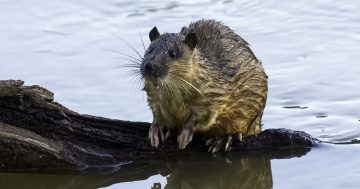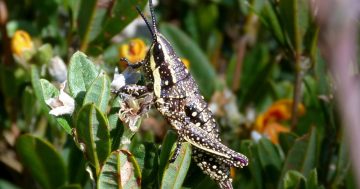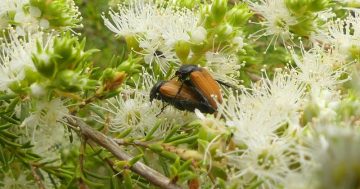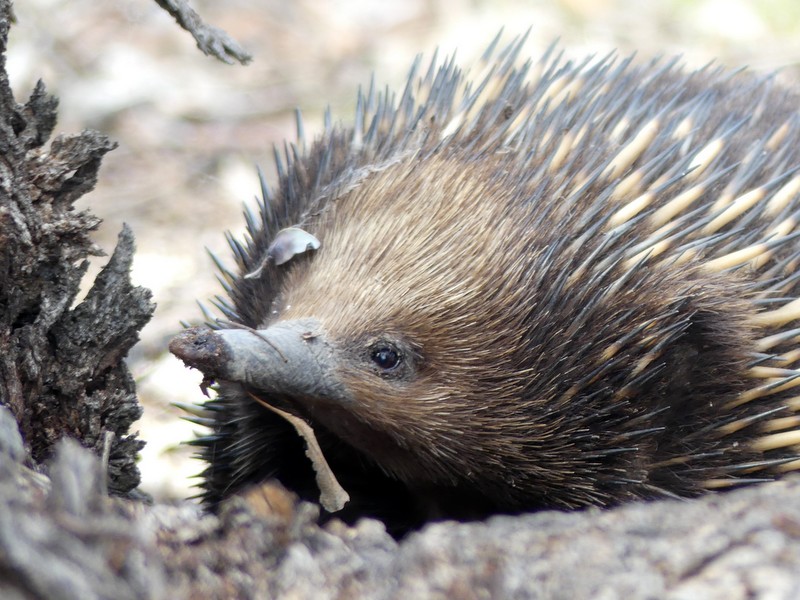
An echidna with a muddy snout from foraging. Photo: Ian Fraser.
Echidnas are truly remarkable Australians. OK, they are also New Guineans, but let’s stick with the one we know from Canberra, at least until the end of this column.
With the platypus, echidnas form the major mammal group monotremes. The group is actually very minor in terms of the number of species, but major in the fact it is one of only three basic mammal groups, along with marsupials and ‘all the rest’ (or placentals, which includes us humans).
Monotremes are characterised by laying eggs, unlike all other mammals. The echidna is the newcomer in the group; its platypus-like aquatic ancestors outdating it by at least 100 million years.
Nonetheless, the echidna ancestor swam ashore at least 20 million years ago – perhaps 50 million years ago – and adopted a land-dwelling lifestyle. However, modern echidnas can still swim very well indeed, paddling with their powerful digging legs and using their snout like a snorkel.
The oldest direct evidence of monotremes is a bit surprising – an opalised jaw with three teeth from Lightning Ridge in outback NSW.
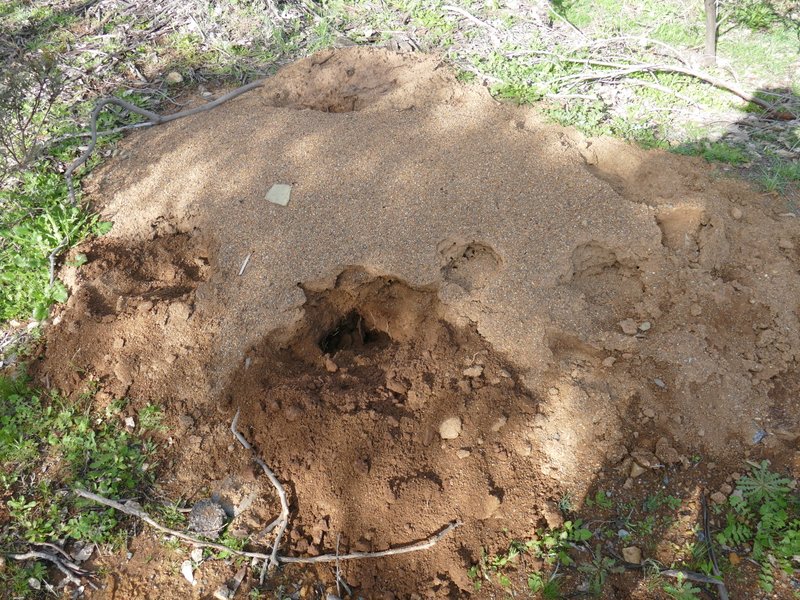
A meat ant nest which has recently been repeatedly opened for an echidna’s snack. Photo: Ian Fraser.
The surprise is because modern platypuses and echidnas have entirely done away with teeth.
The question of how do we know it’s from a monotreme is a very good one and the answer lies in the jaw structure.
Echidna jaw bones extend to form a snout, with a mouth that can only open to a gap of about 5mm. The key to eating for an echidna is its long tongue which can protrude up to 18cm, coated with a sticky mucous which traps anything that comes in contact with it.
Soft grubs are welcome, but the basic diet of an echidna is the eggs and larvae of ants and termites which it accesses by ripping straight into the mound.
These, plus lots of unfortunate hard-bodied workers and soil, are mashed against the hard plates of the palate and the whole gooey mess is ingested. The soil is later deposited in typically cylindrical droppings.
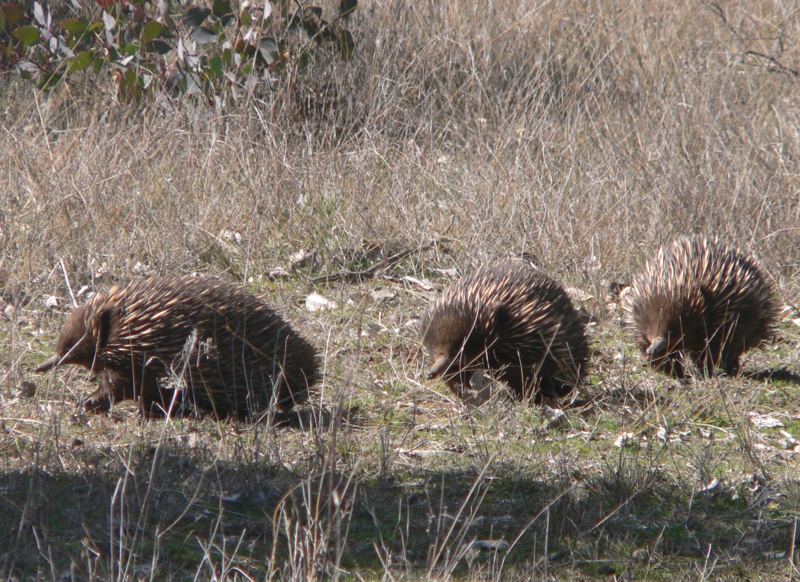
Part of an ‘echidna train’, a strange weeks-long mating ritual at Mulligans Flat. Photo: Ian Fraser.
At this time of year, if you’re lucky, you might come across an ‘echidna train’, comprising a wandering female followed by up to half a dozen or more hopeful males.
The strongest male – determined by shoving matches – takes the prime position behind her with smaller suitors trailing behind. This can go on for many days, lasting into weeks. She can stop and feed at her leisure, but the dominant male dares not lest he lose his prized place at the head of the others.
In the process, he may lose up to a quarter of his body weight by the time she finally decides she’s ready and lies, unhelpfully, flat on the ground. He, and usually his biggest rival, dig alongside her and after a final tussle the exhausted winner gets to mate with her. After that, the train finally disperses.
She lays a single small leathery egg into her pouch and carries it around for 10 days until it hatches as a blind hairless puggle. (The word puggle was introduced in a 1991 scientific paper, apparently borrowed from a line of plush toys.)
She continues to carry the puggle, nourishing it on extremely high-protein, high-iron milk for a couple of months until it weighs half a kilogram and is starting to form spines from bundles of fused hairs.
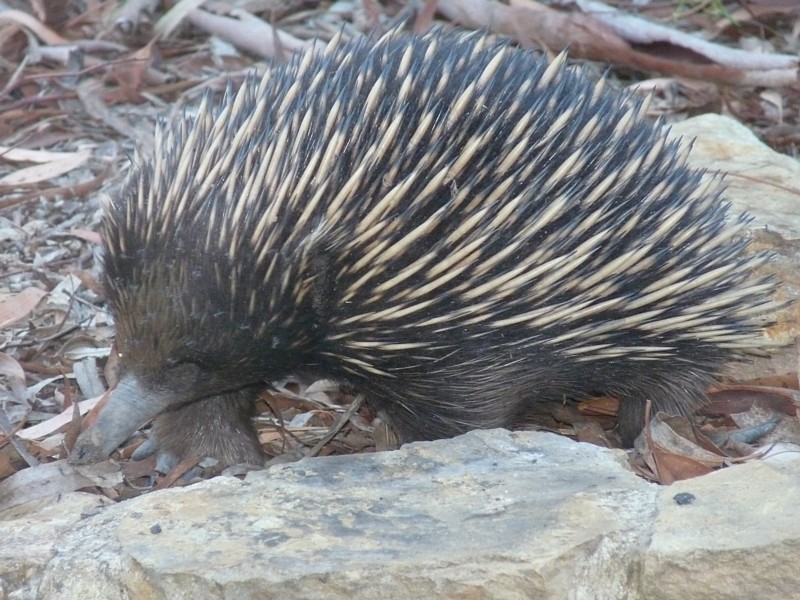
An echidna at the Australian National Botanic Gardens in Canberra. Note the powerful shovel-like digging feet, leathery snout, tiny eyes and strong quills comprised of hair bundles. Photo: Ian Fraser.
This is definitely time to deposit and seal it in a nursery burrow about a metre long, where it will lead a lonely existence broken only by maternal visits every few days to fill it with milk, which eventually contains 50 per cent solids.
Finally, in mid-summer, she lets it loose to start its wandering life, solitarily until the time comes for it to seek a mate.
If it survives the hazards of suburbia, a Canberra echidna can live for decades and be quite at home moving between reserves, amiably snuffling and shuffling its way along, often not noticing you until quite close. Then, if on soil, it will quickly dig in, leaving only an impenetrably spiny ball exposed.
Here’s something to ponder while you wait for it to forget why it’s hiding and to start to peer around with bright, but not very sharp, little eyes.
When a trivia night host asks how many species of monotremes there are, if they know their echidnas the correct answer is five – there are also three New Guinea species of long-nosed echidnas. But some of them don’t know and think there are only two – platypus and ‘echidna’.
A prickly dilemma indeed.
Ian Fraser is a Canberra naturalist, conservationist and author. He has written on all aspects of natural history, advised the ACT Government on biodiversity and published multiple guides to the region’s flora and fauna.












